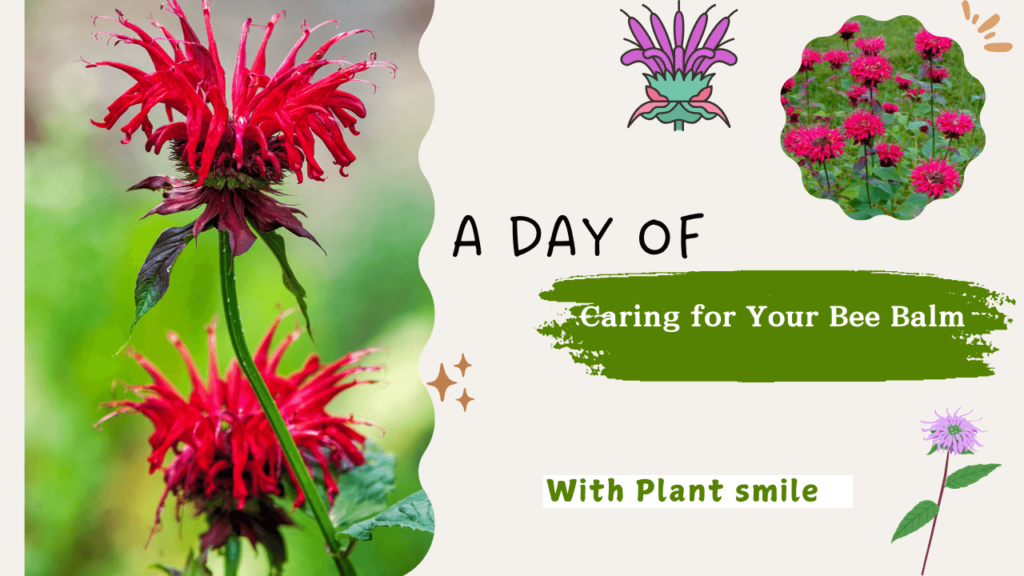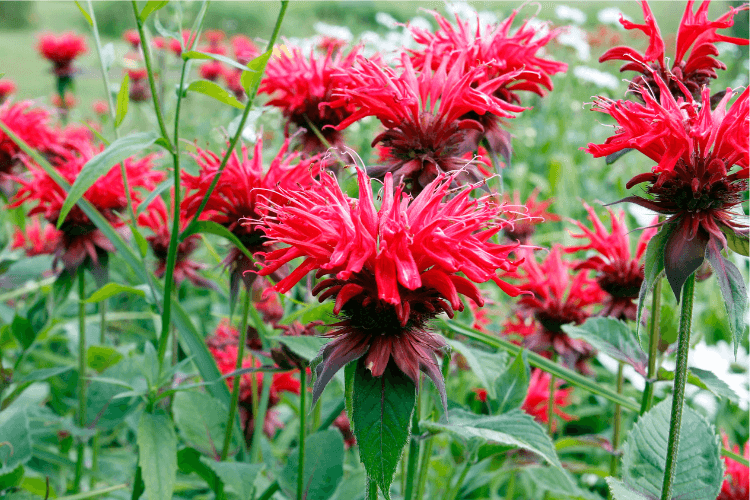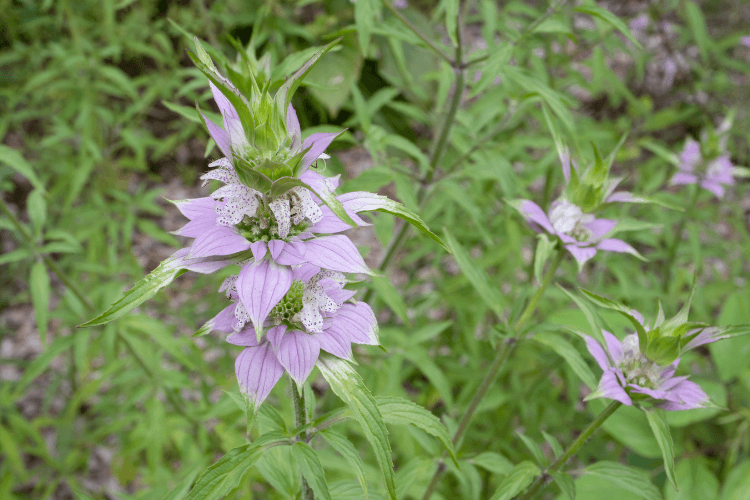Imagine stepping into a garden where vibrant colors dance, pollinators buzz with excitement, and a delightful herbal fragrance fills the air. This isn’t just any garden scene – it’s the magical world of the bee balm plant, a native North American treasure that transforms ordinary landscapes into extraordinary ecosystems.
If you’ve ever wondered how to cultivate a plant that attracts wildlife, offers medicinal benefits, and brings stunning visual appeal to your garden, you’re in the right place. This comprehensive guide will walk you through everything you need to know about the bee balm plant, from its fascinating history to practical growing tips.
Table of Contents
What is the Bee Balm Plant? Understanding Its Beauty and Benefits

The Bee Balm Plant, also known by its scientific name Monarda didyma, is a member of the mint family and is renowned for its bright, aromatic flowers. This plant can reach heights of up to four feet, depending on the variety. Known for its unique flowers, the Bee Balm can bloom in red, purple, pink, and white hues, offering a showstopper in any garden.
Key Features of the Bee Balm Plant:
- Attractive to Pollinators: The colorful flowers are a magnet for bees, butterflies, and hummingbirds, boosting the health of your garden..
- Medicinal and Culinary Uses: From herbal teas to Bee Balm Lip Balm, the plant offers numerous uses in both traditional medicine and personal care.
- Distinctive Foliage and Fragrance: The leaves of the Bee Balm are fragrant and can be used in teas or simply as a natural air freshener.
- Versatility: Works well in borders, pollinator gardens, and wildflower meadows.
Why Grow a Bee Balm Plant?
- Aesthetic Appeal: The Bee Balm Flower creates a bold splash of color in your garden.
- Medicinal Benefits: Its flowers and leaves are used for making herbal remedies and teas, offering various health benefits, including calming properties.
- Easy Care: Once established, Bee Balm Care is minimal, making it ideal for busy gardeners.
Ideal Growing Conditions
If you’re looking to grow a healthy and vibrant Bee Balm Plant, you’ll need to replicate its ideal natural conditions. Let’s dive into the factors that will ensure your plant thrives.
Sunlight Requirements
Bee Balm Plants thrive in full sun, but they can tolerate partial shade. They require at least six hours of direct sunlight each day to encourage robust growth and vibrant blooms. However, too much direct sun in extremely hot climates may cause the plant to struggle, so providing partial afternoon shade can be beneficial in those regions.
Soil Type for the Bee Balm Plant
The soil should be well-draining but moist. Bee Balm thrives in slightly acidic to neutral soil, with a pH level between 6.0 and 7.0. Ensure that your soil is rich in organic matter, which will support the plant’s growth. If your soil isn’t naturally acidic, you can amend it with organic compost to adjust the pH.
Watering Needs
Regular watering is essential, especially during dry spells. However, Bee Balm Plant doesn’t like soggy soil, so make sure the area drains well to avoid root rot. Water the plant at the base to keep the leaves dry, reducing the chance of fungal infections like powdery mildew.
Spacing Considerations
The Bee Balm can grow quite large—up to four feet tall and wide in some varieties. Therefore, ensure you provide enough space between plants to promote healthy airflow and prevent overcrowding, which can lead to disease.
How to Grow Bee Balm Plants Successfully
Now that you know the ideal growing conditions, let’s move on to the planting process. Whether you’re starting with Bee Balm Seeds or young plants from a nursery, planting this herb is a straightforward process.
Starting from Seeds
If you choose to grow from Bee Balm Seeds, start indoors 6–8 weeks before the last expected frost. Plant seeds about 1/8 inch deep in a seed-starting mix. Keep them moist and provide bright, indirect light until they germinate. Transplant the seedlings outdoors once the danger of frost has passed and the weather has warmed.
Planting Nursery-Grown Plants
If you’re short on time, you can buy young plants from a local nursery. When planting, dig a hole that is slightly larger than the root ball of your Bee Balm. Place the plant in the hole, ensuring that the top of the root ball is level with the surrounding soil. Fill the hole with soil, pressing it gently around the roots to eliminate air pockets. Water thoroughly to settle the soil.
Caring for Your Bee Balm Plant: Essential Tips

Now that your Bee Balm Plant is in the ground, it’s time to give it the care it needs to thrive. While this plant is relatively low-maintenance, regular attention to its needs will help it grow strong and vibrant.
Bee Balm Care: Pruning and Maintenance
To encourage fresh growth and prevent your Bee Balm from becoming too leggy, it’s important to prune it regularly. Deadheading spent flowers will encourage more blooms and prevent the plant from self-seeding too aggressively. After the flowering season, trim back any dead or diseased stems to maintain a tidy shape.
Mulching and Fertilizing
Applying a layer of mulch around the base of your Bee Balm will help retain moisture and keep the soil temperature consistent. It also helps to prevent weeds. As for fertilizing, use a balanced, organic fertilizer early in the growing season to boost growth, but avoid over-fertilizing as this can lead to excessive leaf growth at the expense of flowers.
Pest Control and Disease Prevention
While the Bee Balm Plant is relatively pest-resistant, it can sometimes fall victim to mildew or aphids. To prevent powdery mildew, ensure your plants have good airflow and avoid overhead watering. If you spot aphids, gently rinse them off with water or use a mild insecticidal soap.
Varieties of Bee Balm: Which One Is Right for You?
The Bee Balm Plant comes in various colors and forms, each offering something unique to your garden. Let’s explore some of the most popular varieties.
Scarlet Bee Balm

This variety features vibrant red flowers, making it a striking addition to your garden. The Scarlet beebalm is one of the most popular choices for attracting hummingbirds and bees. Its bold color creates a dramatic effect when planted in large groups.
Spotted Bee Balm

If you’re looking for something a little different, the Spotted BeeBalm is perfect. With its unique spotted flowers, this variety adds an exotic touch to your garden. It is also a favorite of butterflies and bees, making it both beautiful and beneficial.
Lemon Bee Balm

For those who love citrus scents, the Lemon BeeBalm is a must-have. This variety has a lovely lemon fragrance, and its light pink flowers are a favorite of bees. Lemon BeeBalm is often used in teas and herbal remedies.
Wild Bergamot Bee Balm

Known for its medicinal properties, Wild Bergamot is an essential herb for herbalists. It produces lavender-pink flowers and attracts a wide variety of pollinators, making it an excellent choice for creating a pollinator-friendly garden.
Common Issues with the Bee Balm Plant: Pests, Diseases, and How to Solve Them
Even though Bee Balm Plant is generally hardy, it is susceptible to a few pests and diseases. Here are some of the most common issues and how you can address them:
- Powdery Mildew: This fungal disease is common in humid climates. It appears as a white, powdery coating on the leaves. To treat it, remove affected leaves and avoid overhead watering.
- Aphids: These tiny insects can weaken your plant by sucking sap from the leaves. Wash them off with a strong jet of water or treat with insecticidal soap.
- Root Rot: Caused by overwatering or poor drainage, root rot can kill your Bee Balm. Ensure your plant is in well-draining soil and water it carefully.
Creative Uses of Bee Balm
Culinary Uses
- Add fresh Bee Balm Flowers to salads for a pop of color.
- Brew soothing herbal teas using the leaves.
Table: Bee Balm Tea Recipe
| Ingredient | Quantity |
|---|---|
| Fresh Bee Balm Leaves | 1 tablespoon |
| Hot Water | 1 cup |
| Honey (optional) | 1 teaspoon |
Magickal and Decorative Uses
- Spotted Bee Balm Magickal Uses: Known for its role in rituals and ceremonies.
- Dried flowers can be used in wreaths, potpourri, or as ornamental decorations.
Bee Balm in Full Bloom: Height, Spacing, and Garden Design
Ideal Bee Balm Height and Spacing
- Height: Typically 2-4 feet tall, depending on the variety.
- Spacing: 18-24 inches to prevent overcrowding and disease.
Designing with Bee Balm
Use the Bee Balm to:
- Add layers to a pollinator-friendly garden.
- Create vibrant borders or accents in flowerbeds.
FAQ: Common Questions About the Bee balm
Q1: What Not to Plant with Bee Balm?
Certain plants, such as Bee Balm, can be invasive and may not work well with others in your garden. It’s best to avoid planting it next to plants that require dry conditions or those that are susceptible to powdery mildew.
Q2: How tall can the Bee Balm Plant grow?
Depending on the variety, BeeBalm Plant can grow from 2 to 4 feet in height. Make sure to space them well apart to allow for their full growth.
Q3: How do I propagate the Bee Balm Plant?
You can propagate the Bee balm by dividing the roots or taking cuttings. Dividing mature plants every 2-3 years will help keep them vigorous.
Conclusion: The Joy of Growing the Beebalms in Your Garden
The Bee Balm Plant isn’t just a plant—it’s an experience. From its vibrant colors to its ability to support pollinators, this versatile perennial is a gardener’s dream. By following this guide, you’re well on your way to cultivating a thriving, beautiful garden that’s as rewarding to care for as it is to admire. Start your journey today and let the Bee Balm Plant transform your outdoor space.
Dive into our extensive plant care guides and let Plant Smile help you bring your garden dreams to life. With expert advice, practical tips, and the latest articles, you’ll be equipped to create a flourishing, breathtaking garden that thrives year-round. Don’t miss out—start your gardening journey with us today!

